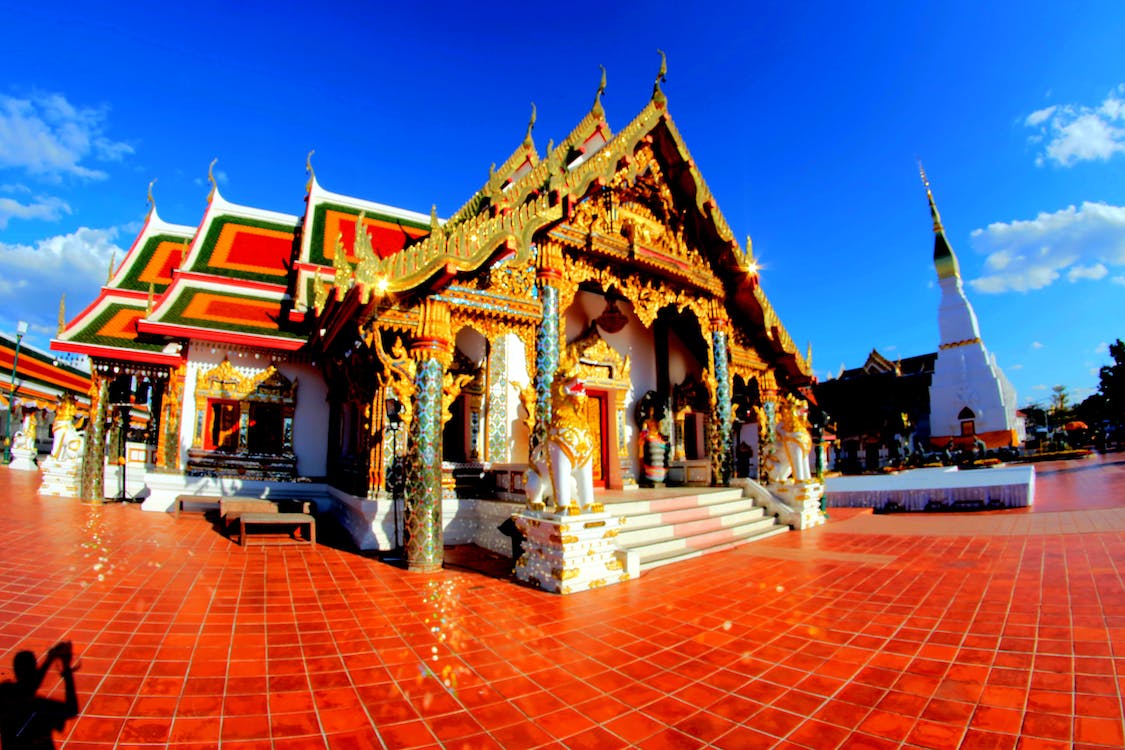Ayodhya is a city in Uttar Pradesh that is rich in religious and historical significance. The Ayodhya Temple is the most important tourist attraction in the city. It is known as the birthplace of Lord Rama and is one of the Hindus’ seven sacred towns. The Ram Janmabhoomi Temple, commonly known as the Ayodhya Temple, is thought to be Lord Rama’s birthplace. Devotees from all over the world visit this hallowed spot in search of blessings and serenity. Visiting Ayodhya Temple is a spiritual adventure that immerses tourists in Lord Rama’s sacred dwelling. Given below is Ayodhya Tourist Places List where you can visit during your trip to ayodhya.
There are List Of Ayodhya Tourist Places
1)Ram Janmabhoomi Temple: The Ram Janmabhoomi Temple in Ayodhya, India, has a special place in the hearts of millions of Hindus worldwide. As Lord Rama’s birthplace, the temple holds tremendous religious significance and has been a focal point of historical arguments and confrontations for decades. The temple’s journey from disagreement to resolution has been a tribute to India’s cultural variety, religious harmony, and commitment to justice, spanning millennia.
Address: Registered Office: R-20, Greater Kailash Part -1, New Delhi, 110048, Camp Office: Ram Kachehri, Ramkot Ayodhya – 224123 .
2)Hanuman Garhi: A renowned hilltop temple devoted to Lord Hanuman. It provides a 360-degree perspective of the city.
Address: Sai Nagar, Ayodhya, Uttar Pradesh 224123.
3)Kanak Bhavan: Dedicated to Lord Rama and Sita, this temple is known for its superb architecture and delicate carvings.
Address: Tulsi Nagar, Ayodhya, Uttar Pradesh 224123.
4)Treta Ke Thakur: Also known as Nageshwarnath Temple, it is an ancient Shiva temple that is said to have been founded by Lord Rama himself.
5)Guptar Ghat: A important bathing ghat on the Sarayu River’s banks where pilgrims take a sacred bathe.
6)Swarg Dwar: Swarg Dwar Ayodhya, the Gateway to Heaven, is a tribute to millions of Lord Rama’s devotees’ unwavering faith and devotion. Its historical and mythological significance, along with the tranquil environs of the Sarayu River, create a divine aura that penetrates the souls of those who visit. Swarg Dwar will remain a respected symbol of devotion, salvation, and the undying legacy of Lord Rama’s celestial home as pilgrims continue to embark on spiritual journeys to this hallowed site.
7)Ramkot: Ramkot, located in the historic city of Ayodhya, enjoys unrivaled importance in the hearts of millions of faithful Hindus all over the world. The magnificent fort, located on a high platform, is a testament to Lord Rama’s heavenly legacy as the seventh avatar of Lord Vishnu. Ayodhya’s spiritual energy draws pilgrims and history buffs alike, and Ramkot is one of the city’s most treasured sites, bearing the echoes of a fabled past and the promise of eternal faith.
8)Naya Ghat: Swarg Dwar Ayodhya, the Gateway to Heaven, is a tribute to millions of Lord Rama’s devotees’ unwavering faith and devotion. Its historical and mythological significance, along with the tranquil environs of the Sarayu River, create a divine aura that penetrates the souls of those who visit. Swarg Dwar will remain a respected symbol of devotion, salvation, and the undying legacy of Lord Rama’s celestial home as pilgrims continue to embark on spiritual journeys to this hallowed site.
9)Tulsi Smarak Bhawan: A museum honoring the poet-saint Tulsidas, best known for his book “Ramcharitmanas.”
10)Gulab Bari: Gulab Bari, located in the ancient city of Ayodhya, Uttar Pradesh, India, is a beautiful garden with a timeless beauty. This magnificent compound, also known as the Rose Garden, combines historical significance, architectural magnificence, and spiritual veneration in a unique way. Gulab Bari visitors are enveloped in a calm oasis where the aroma of flowers mingles with the echoes of a rich historical history.
11)Moti Mahal: A historical location near Hanuman Garhi associated with the Nawabs of Awadh.
12)Ram Katha Museum: A museum that depicts Lord Rama’s life and teachings via numerous displays and artifacts.
Conclusion
Visitors should keep in mind that Ayodhya is a religiously significant area for Hindus, and they should respect local customs and traditions when viewing these sites. The winter months (October to February) are ideal for touring in Ayodhya because the temperature is mild. So now you can visit “Ayodhya Tourist Places List” and enjoy your trip to ayodhya and make memories with these places.
FAQ
Question1: What is the favorite place in Ayodhya?
Answer: Best places to visit in ayodhya are “Ram Katha Museum”, Guptar Ghat, Naya Ghat, Gulab Bari.
Question2:Which river is in Ayodhya?
Answer: Sarayu River is present in ayodhya.
